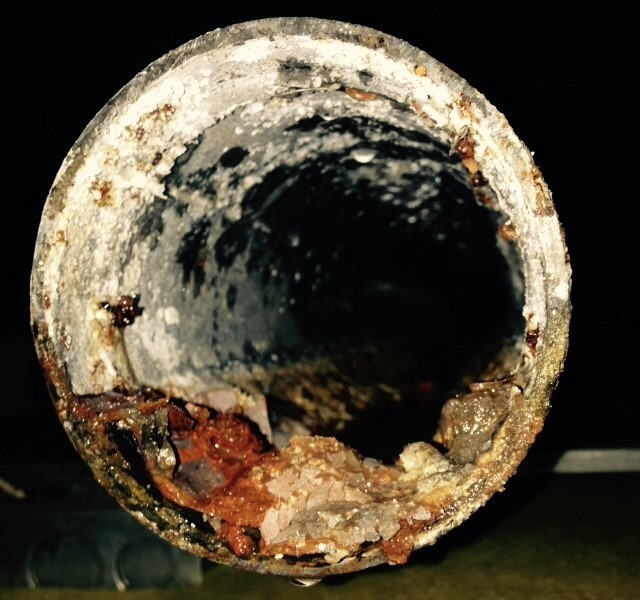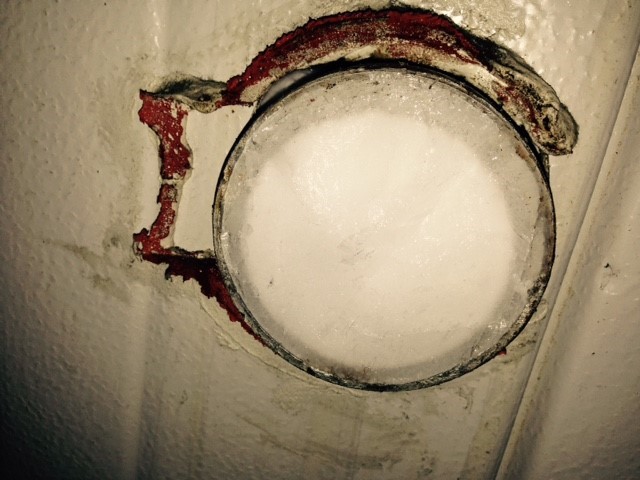Recent conjecture in the fire sprinkler industry has proposed the use of compressed air dryers as a more cost-effective means to control oxygen corrosion and reduce moisture content in dry pipe and preaction fire sprinkler systems. This document serves to clarify a few key points to eliminate the misapplication of supervisory air equipment for fire protection systems.
MYTH:
Compressed air dryers offer an alternative to nitrogen generators to prevent corrosion in dry pipe and preaction fire sprinkler systems.
FACT:
Compressed air dryers offer NO protection against oxygen corrosion, which is the primary cause of premature pipe failures and pin-hole leaks in fire sprinkler systems. Compressed air dryers simply remove excess moisture content from the supervisory air supply to the dry sprinkler system. They do nothing to eliminate the corrosive gas, oxygen, from the air supply.
A simple chemistry review illustrates that corrosion occurs when three (3) elements are present: liquid water, oxygen gas, and metal. Drying the air before it enters the sprinkler system does not address the trapped water present in the sprinkler system from the initial hydrostatic test or the most recent trip event. Even a sheen of water is enough to allow oxygen to dissolve into the water and then react with the metal. It is not possible or practical to remove all the moisture from a dry or preaction system piping network. Any experienced sprinkler fitter would confirm that dry pipe sprinkler systems are never truly dry.

Fig. 1: 6-year-old galvanized steel main, approx. 1/3 full of trapped water
When a compressed air dryer feeds a fire sprinkler system, it allows 21% oxygen to enter the system. The oxygen then reacts with the metal pipe where trapped water collects and removes metal at a very localized point in the system. This can be at low points in a supply main, drops to pendent sprinklers, or branch lines that were not pitched properly when installed or no longer drain properly as the building settles over time.
If your goal is to eliminate corrosion in dry pipe and preaction fire sprinkler systems, you only have one option: a nitrogen generator. Factory Mutual testing has shown that steel piping corrodes 20 times faster when exposed to air, compared to exposure to high purity nitrogen gas.1
Note that corrosion is much more severe when galvanized steel piping is used. There is no scientific basis to support using compressed air dryers for corrosion control in fire sprinkler systems and it is not a recommended corrosion mitigation strategy for Factory Mutual insured properties.2
MYTH:
Reducing the dew point or relative humidity inside of dry pipe and preaction sprinkler systems will prevent corrosion.
FACT:
Reducing the dew point of the pressure maintenance air will reduce the amount of moisture that is introduced by the air compressor. However, as previously discussed, all the water needed to cause corrosion in a dry pipe sprinkler system is already available inside the system from the initial hydrostatic test or the most recent trip event. Maintaining a sprinkler system with low dew point supervisory air containing 21% oxygen will not prevent localized corrosion where trapped water is present.
MYTH:
Compressed air dryers are the superior option for supervisory gas in cold/freezing storage environments.
FACT:
Compressed air dryers produce supervisory gas with a dew point of -40oF.
FM Approved nitrogen generators produce supervisory gas with a dew point of -90oF3. As a quick review, dew point is the temperature below which water droplets begin to condense from air. When the temperature is below freezing, the dew point is called the frost point because frost or ice will form rather than liquid water. A lower dew point means there is less moisture in the air.

Fig. 2: ice plug at freezer wall penetration, System supplied with compressed air dryer.
For the purpose of preventing ice plugs and frost accumulation inside supervisory gas supply piping and sprinkler system piping, nitrogen generators offer a superior solution to compressed air dryers because the gas from a nitrogen generator contains significantly less water content. When multiple sprinkler systems require dry supervisory gas the cost difference between compressed air dryers and nitrogen generators is negligible.
When larger applications are considered, nitrogen generators represent a lower cost option due to the volume and system quantity limitations associated with compressed air dryers, which can only supply three (3) sprinkler systems per unit. One (1) nitrogen generator can supply supervisory gas in a cold storage facility that may otherwise require six (6) or more compressed air dryers.
MYTH:
Preventative maintenance for nitrogen generators is equivalent to compressed air dryers.
FACT:
Maintenance of compressed air dryers is labor intensive, which requires an initial break-in period, annual filter replacement, and desiccant replacement every 3 years followed by an additional break-in period. If desiccant is not replaced when required, the performance of the air dryer will be dramatically reduced and when the desiccant material breaks down it represents a risk to escape the dryer tower and clog air supply lines to the sprinkler system.4
When nitrogen generators are equipped with premium gas separation membranes, they provide a minimum 20-year service life with annual filter replacement. Additionally, gas analyzers can be used to constantly monitor the purity of nitrogen in the sprinkler systems, instantly alerting facility personnel if system performance has been compromised.
Compressed air dryers also use more power than membrane type nitrogen generators because heated air is used to recharge the desiccant column. A membrane type nitrogen generator only runs when nitrogen gas is required to maintain system pressure.
References:
- FM Global Property Loss Prevention Data Sheet 2-1, Corrosion in Automatic Sprinkler Systems, April 2018.
- FM Global Research Technical Report, Corrosion and Corrosion Mitigation in Fire Protection Systems, Paul Su and David Fuller, July 2014.
- Air Products, Prism Alpha Membrane Design and Reference Manual, June 2000.
- Engineered Corrosion Solutions White Paper, Controlling Ice Plugs and Corrosion in Fire Sprinkler Systems Protecting Cold Storage (Freezer) Applications, Jeff Kochelek, May 2017.


